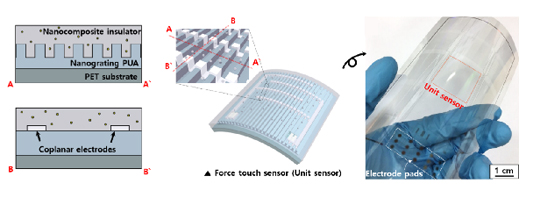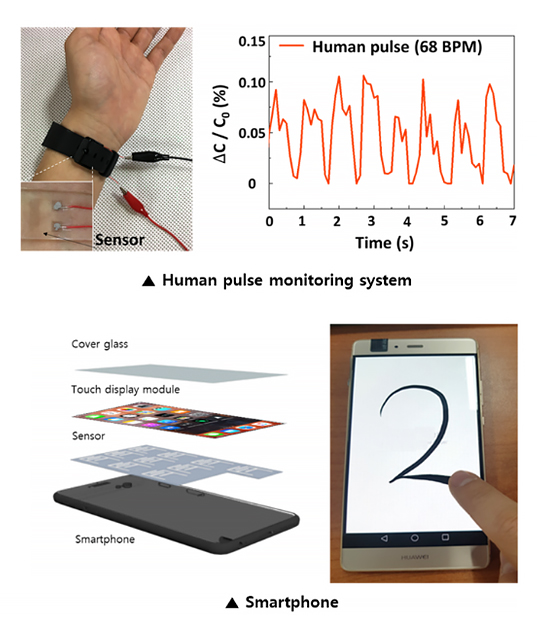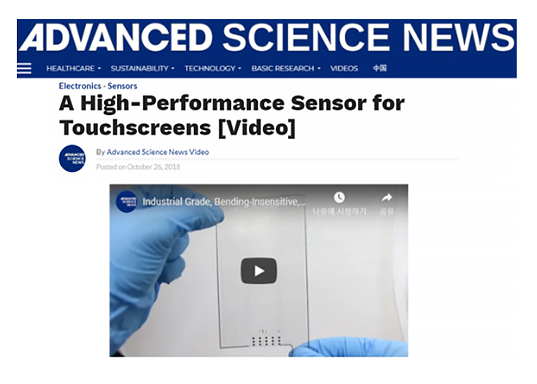KAIST
BREAKTHROUGHS
Research Webzine of the KAIST College of Engineering since 2014
Spring 2025 Vol. 24Industrial-grade flexible transparent force touch sensor for wearable devices
Industrial-grade flexible transparent force touch sensor for wearable devices
A bending-insensitive and transparent force touch sensor with high sensitivity is proposed by developing hierarchical nanocomposite films, composed of large-area (7-inch) 200nm pitched nanograting plastic bases and dielectric polymer layer with metal nanoparticles. In particular, the proposed sensor-device successfully shows high performance meeting industrial-grade requirements such as sensitivity, reliability, transparency, uniformity and reproducibility, owing to its simple design and semiconductor-based fabrication process.
Article | Spring 2019
A KAIST research team led by Professor Jun-Bo Yoon, PhD student Jae-Young Yoo, and Dr. Min-Ho Seo from the School of Electrical Engineering has developed a transparent flexible force touch sensor that can be applied to wearable devices.
The force touch sensor has received a great deal of attention for various applications ranging from practical smartphones to wearable devices because it can provide various functions by recognizing pressure and position information. To apply a force touch sensor to wearable devices, a number of companies and research teams have been focusing on high sensitivity and flexibility by using micro/nanostructure. While previous high-performance sensors have actually improved specific performance, they could not satisfy overall performance for commercialization such as sensitivity, flexibility, transparency, reproducibility and reliability in various use environments. Therefore, there is still a limit to applying force touch sensors to various products.
To overcome these issues, the research team focused on the development of non-air gap sensors to break away from the conventional technology in which force touch sensors need to have air-gaps between electrodes for high sensitivity and flexibility. The proposed non air-gap force touch sensor is composed of a transparent nanocomposite insulator containing metal nanoparticles which can maximize the change of dielectric constant according to the pressure, and a nanograting substrate which can increase sensitivity by concentrating pressure. As a result, the research team succeeded in fabricating a highly sensitive transparent flexible force touch sensor that is mechanically stable against repetitive pressure.
Furthermore, by placing the sensing electrodes on the same plane as the neutral plane, the force touch sensor can detect without changing the performance, even when bending to the radius of the ballpoint pen. The proposed force touch has also satisfied commercial considerations in mass production such as large-area uniformity, production reproducibility, and reliability according to long-term use and temperature/humidity variation.
Finally, the research team applied the developed sensor to a wearable pulse-monitoring device and detected a real-time human pulse. In addition, the research team confirmed with HiDeep, Inc. that a 7-inch large-area sensor can be integrated into a commercial smartphone.
PhD student Jae-Young Yoo, who led this research, said, “We successfully developed an industrial-grade force touch sensor by using simple structure and fabrication process. And we expect it to be widely used in user touch interfaces and wearable devices.”
This research was supported by the Basic Research Program through the National Research Foundation of Korea funded by the Ministry of Science and ICT, and also supported by the Open Innovation Lab Cooperation Project funded by the National Nano Fab Center.
This research, which was equally contributed by PhD student Jae-Young Yoo and Dr. Min-Ho Seo, was published online in Advanced Functional Materials Journal (Adv. Funct. Mater. 2018, 28, 1804721) and was selected as a back cover image of the offline journal. Furthermore, a video abstract that introduces this research was featured in Advanced Science News.
(Video abstract link: https://www.advancedsciencenews.com/a-high-performance-sensor-for-touchscreens-video/)
Most Popular

When and why do graph neural networks become powerful?
Read more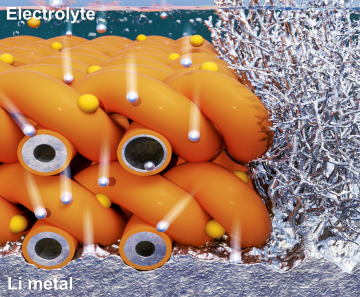
Extending the lifespan of next-generation lithium metal batteries with water
Read more
Professor Ki-Uk Kyung’s research team develops soft shape-morphing actuator capable of rapid 3D transformations
Read more
Smart Warnings: LLM-enabled personalized driver assistance
Read more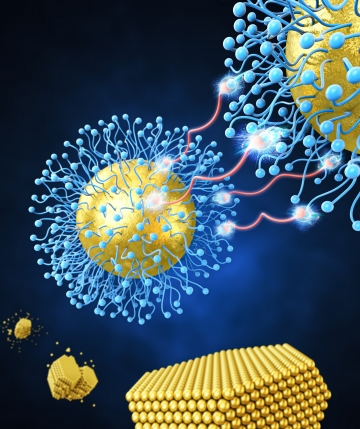
Development of a nanoparticle supercrystal fabrication method using linker-mediated covalent bonding reactions
Read more
